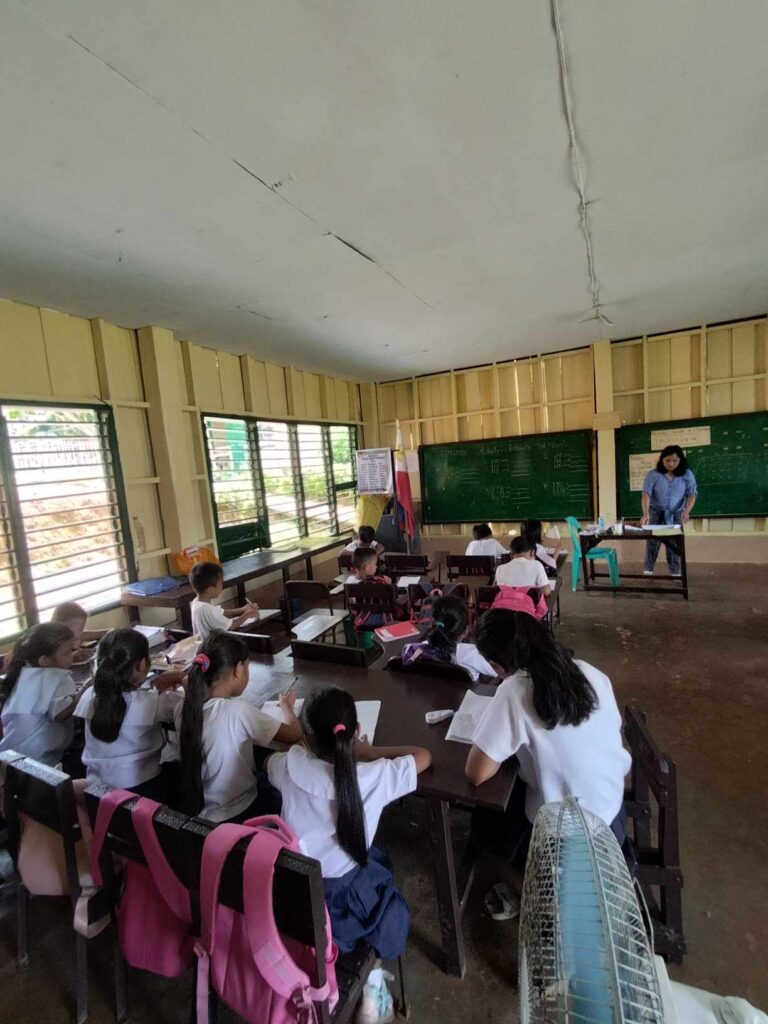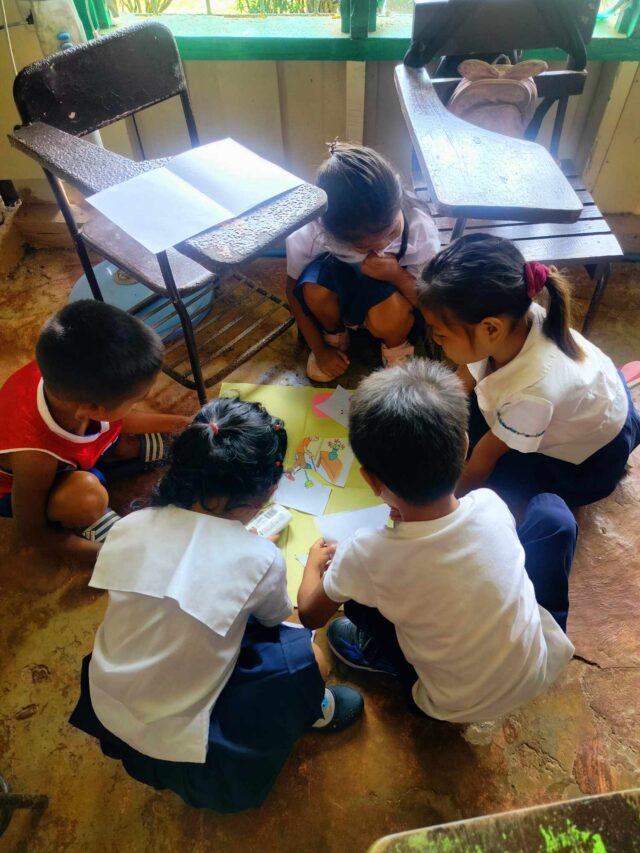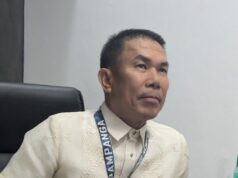Borongan City, Pinanag-an – Every Monday, Albert Azul, Head Teacher of Pinanag-an Elementary School, prepares for a journey that will take him up both a river and a mountain to the last barangay of Borongan City, Pinanag-an. The two-hour journey—oftentimes more—starts off with a one-hour motorcycle ride to Benowangan where a motorboat is docked. The motorboat will take him and his fellow teachers through a river with unpredictable water level and water current.
“It will take us approximately one to two hours to reach the Barangay if the water level is high. if not, we need to get off the boat, at least 2 times, because there are portions where the water level is very low and hindi makakausad ang boat pag may passengers aboard (boat won’t be able to procced with passengers). So maglalakad kami sa tubigan until pwede na ulit (So, we’d walk through the water until the boat is able to take passengers again.) There are times, the current is too strong that it’ll be hard to walk or even go by boat. There are even instances when I had to jump off the boat because it can’t stand the water current,” he said.
Because of the distance from the city center and the arduous journey going to the pure multi-grade school, Albert would stay there for the week until Friday afternoon and just go back home to Divinubo Island for the weekend. Albert and his co-teachers have settled on this routine to save time, energy, and money, while they perform their sworn duty.

Motivation to do more and be more
Teachers like Albert, who handle pure multigrade classes or those who teach in schools in remote, hard-to-travel-to or high-risk areas, now receive an allowance of 25 per cent of their monthly salary with the Special Hardship Allowance or known as SHA. “Napakalaking tulong sa mga teacher tulad namin ang hardship allowance. Dahil marami kaming utang, yang quarterly hardship allowance na lang ang nagpapakilig sa amin.” (The hardship allowance is a big help for teachers like us. Since we have lots of loans, the quarterly release of the allowance is one of the few things that make us excited.), Albert said. Since he transferred to this school and started receiving the stipend, he was able to fund his master’s degree at Eastern Samar State University, which he now graduated from. His fellow teachers are doing the same now.
Determining which teachers will receive allowance and how much additional they will receive all depends on the Hardship Index. Last year, the Department of Education lowered the index cut-off from 0.37 to 0.33, allowing more teachers to avail of the allowance. The index, which UNICEF Philippines initially proposed and later helped develop and refine, is an evaluation tool designed to determine the degree of hardship—from 0 to 1—of a particular school. The scoring is based on factors such as: time and cost of commuting to the school, availability of learning spaces, level of poverty, access to basic amenities, and risk for human-induced and natural disasters. The higher the score, the higher the degree of hardship for the school.
Albert confirms the initial success of the programme. Teachers now receive much-deserved financial assistance and are motivated to stay longer in hardship posts. To date, this stipend has supported at least 4,000 schools and at least 38,000 educators annually. This also benefits children, especially the underserved ones in remote or high-risk areas which often have trouble recruiting teachers and getting them to stay. A motivated workforce also results to better performing kids.

Supporting each other
Despite numerous uplifting stories from teachers, the distribution of the allowance can still be improved. Some schools that should have received it, did not; while those that should not have received it, did. Teachers, who are away from official travel, also don’t receive the allowance for the period they are away from their duty stations.
Part of the problem lies in faulty data. Some of the variables used in the index are difficult to collect, and unfortunately, some schools entered wrong data. DepEd and UNICEF are currently working to improve the index, as well as the eventual allowance distribution for 2025 so it would reflect the situation on the ground. Initial simulation results are already looking better than the current implementation.
Albert is thankful for this development as he hopes that all deserving schools and their teachers get to receive the allowance. He cites the case of their kindergarten teacher, Rho-ann Calvadores, who is not eligible for the allowance since she is not handling a multigrade class: “Minsan nagkasakit yung lola ni Rho-Ann so namo-mroblema sya kung ano ang ipangbabayad nya sa pang-ospital. Nagkataon naman na release ng SHA namin noon kaya pinahiram muna nung isa naming co-teacher yung ATM card nya kay Rho-Ann. Kung walang SHA noon, di namin alam kung ano na ang nangyari sa kanila. Maraming salamat po sa DepEd at sa UNICEF sa patuloy nyong pag-alala sa kapakanan naming mga guro.” (One time, Rho-An’s grandma was sick and she was worried about hospital bills. Fortunately, it was during the same time as the release of our hardship allowance, so one of our co-teachers lent her ATM card to Rho-An. If there were no allowance at that time, we don’t know what would have happened to them. Thank you very much to DepEd and to UNICEF for looking out for the welfare of teachers like us.)
While waiting for the improvements, Albert and his co-teachers who receive the stipend donate one thousand pesos per quarter to Teacher Rho-Ann to compensate for her ineligibility. This shows that a strong sense of community can help address some of the issues facing the country’s education system.
On World Teacher’s Day, UNICEF Philippines also reaffirms its commitment to help strengthen the systems that support teachers as they provide quality education for every child in the Philippines.
Visit www.unicef.ph to know more about the work we’re doing for every child, everywhere. Or follow us on FB/unicefphilippines, X/@unicefphils, IG/@unicefphils, TikTok/@unicefph, and YouTube/@unicefphilippines.





